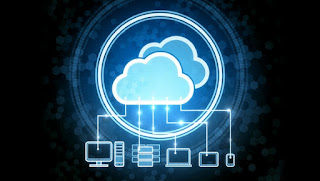Subhash was a smart, innovative and self-starter, 23 yrs old guy
who started a small business with his limited budget. He always wanted to
curtail the business expenses smartly and wanted to opt for smarter investment
techniques. In the initial phase of his business he noticed he faced some
really expensive and severe challenges. He enlisted the top challenges and one
of them was buying hardware for each employee along with the software and their
licenses which he discovered were extremely taxing. Moreover he detected other
problems like storage capacity, keeping updates for newest software and ongoing
trends in the market. He felt with every new hire more software were needed,
such problems worsened the situation and distracted him from the goals of his business.
He researched and finally chose Cloud computing- A smart and user friendly
choice which is easy on pocket too.
Flashback
In the earliest of days when Homo sapiens grew, they beautifully
transformed themselves as humans from apes. Grew a little: understood basic
needs- Food, clothing, shelter. Grew more- found mediums to fulfill those basic
necessities. Then they started 'Developing', now they had farms for food, wells
for water, mills for clothes, bricks for homes. Necessities give birth to utilities.
Same scenario applies for business computing. One of the newest successful
utility is Cloud Computing. Traditionally companies built their own in-house IT
infrastructure catering to all the technical needs. But that involved expensive
equipment and servers and installed everything locally - too much of hard work
involved to make the ends meet! Things have changed. With the dawn of cloud
computing a company can have a reliable and a safer business computing
delivered like a utility service. We buy basic utilities for smooth functioning
of our day to day lives, similarly we 'BUY' IT infrastructure as a service!
Just spend for what we need and focus on the business not the technology.
Technically- What is cloud computing?
Cloud computing is the provision that allows the user to log into
a web based service which hosts all the programs obligatory for completing the
job. The cloud computing service provider runs everything ranging from emailing
to word processing to different complex data analysis programs. The term
'cloud' actually refers to the network of computers which handle all the
assigned respective tasks. Cloud computing service providers charge for the
Maintenance and management of data inputs by clients. Cloud computing has
emerged as the next big thing in the dome of application software, storage,
hardware and platform flexibility that provides easy solutions to the most
complex of things! The system favors all sizes of business but proves really
fruitful for middle and small sized ones.
All one needs to avail the service is a basic computer system, web
browser and the internet. It has become the lifeline of organizations who seek
a simple solution to the compound problem of choosing and organizing software
as per each employee's area of work. Have you ever noticed every internet user
prominently benefits from cloud computing? The finest examples of cloud
computing are Gmail, Amazon web services, Google applications where a browser
helps the user to access the application whenever she/he feels like.
How it works?
Knowing how cloud computing works is interesting. The structural
design can be categorized into two main sections: Front end and back end. Front
end is controlled by the end user or client or say the web browser who uses the
cloud services. Back end is the network of servers with any computer program
and data storage system that runs, handles and maintains the cloud (Succinctly-
The service provider).
Cloud has a centralized server administration system. The
centralized server administers the system, balances and adjusts client supply
and demands, monitors traffic and avoids congestion. This server follows a set
of rules (protocol) known as middleware. Middleware as the name suggests, is
the intermediary that allows networked computers to communicate with each
other. Observing the other side of the process one can rename cloud computing
as green computing because it helps in successful
conservation of power energy.
Can Cloud computing be pocket friendly?
Cloud computing is cost effective too. Unlike traditional
computing, the service condenses "Hard Costs" like cost of hardware,
infrastructure, software licenses, and "Soft costs" such as IT
staffing, troubleshooting, energy costs to run the servers, desktops and
cooling the entire server room. As far as data maintenance costs are involved
they too are quite reduced as they are maintained by the service provider (They
perform the complete set of tasks; from running the cloud to storing data). The
need to high storage hard drives can be snubbed away as all the data is stored
on a remote computer.
Breakdown of the system can cause the owner a serious nervous
breakdown because of high data recovery and system repair costs, not to ignore
the data loss. In such situations, of course the show goes on because the data
can be operated from the remote computer from any place!
Market is in the favor of buyer. Since past three years number of
service providers has swelled. In this computing arena we have crucial players
like Microsoft, Google, Amazon, Intel, and many others who are competing hard
to build effective and impressive clouds for their clients..
Brownie points for Cloud computing users!
Cloud computing's pros do not end here. Databases in cloud
computing are very dynamic and scalable which means that local computers no
longer have to deal with hefty applications that almost kills the speed of the
local computer, and most importantly hardware and software demands on the
user's side decreases. But who plays the protagonist in the whole story of
cloud computing? Answer is Data. The cloud not only builds, runs and maintains
the data but it also secures it.
